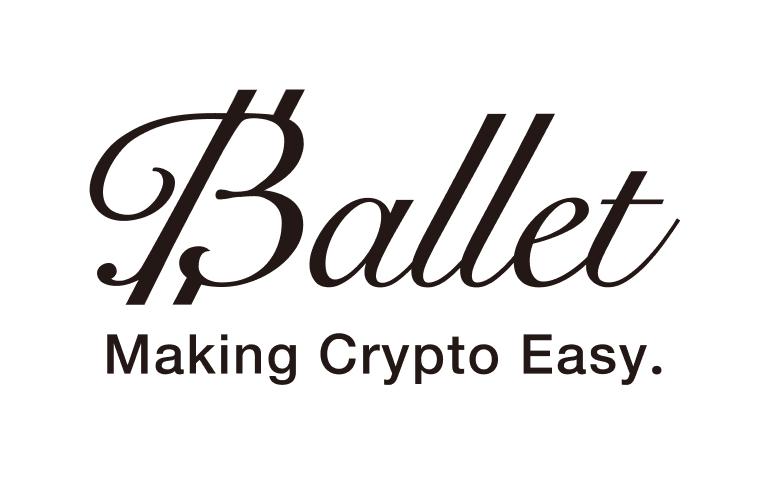Charles Guillemet, CTO at Ledger, explores different options to implement Bitcoin governance strategies at the institutional level.
When a friend introduced me to the Bitcoin whitepaper in 2011, I decided to study this protocol’s cryptography, technology, double-spending problem, and decentralized consensus. I returned to my friend and told him: “Your Bitcoin thing is pretty interesting, but frankly, I don’t understand the use case!” When I joined Ledger in 2017, he made fun of me: “Do you finally get it?” he said. Yes, I finally got it.
Bitcoin is revolutionary because it brings something unprecedented: “Permissionless Money”. With Bitcoin, you don’t need to ask anyone to own and spend your digital value. No state, bank, or third-party can ever interfere with the value you hold and transact. With Bitcoin, you possess a piece of the Internet with complete self-sovereignty and freedom.
Two properties enabling permissionlessness: “decentralized consensus” & “self-custody”
The first property that contributes to Bitcoin’s permissionless nature is known as “decentralized consensus”. With Bitcoin, you have decentralized pools of miners that are incentivized to secure the network and prevent censorship over the execution of transactions. Simply put, when you want to make a transaction, no one can prevent you from making it.
The second property is self-custody. With self-custody, you own your value, and no one can prevent you from owning it, which allows you to control your crypto-assets fully. In order to own Bitcoin, you simply have to generate a public (which is essentially your address) and a private key (your key to prove ownership over your assets). If you lose your private key, you lose your assets, and if an attacker accesses your private key, he will be able to make a transaction… and there’s nothing you can do to revert it.
This need to protect your private keys from hackers is why we’ve built our Ledger Nano devices. This hardware embeds a secure element, where your secrets are generated within the enclave, and the cryptography is implemented within it so that your secrets don’t have to leave the enclave. Your device also features a trusted display, allowing you to understand the transaction you are about to consent to signing.
All of the elements I’ve explained above are pretty simple, but mostly apply to individuals. What does it mean when you are a group of people, an organization, or a financial institution?
Leveraging Bitcoin at the institutional level
You may not want to store your assets on a Ledger Nano when you are an exchange (some did it at the expense of their customers, including FTX and QuadrigaCX). These devices are perfectly secure; you could keep billions on them, but you want to avoid the operational risk of having a single person from your organization fully controlling all the customers’ funds.
Who has access to the coin if organization X decides to buy $100 Million worth of bitcoin? Who can rule whether they use it this way or that way? These are crucial questions, so let’s consider what kind of governance we can have over Bitcoin.
The initial and onchain option: MultiSig on Bitcoin
It used to be Partially Signed Bitcoin Transactions (PSBT). This is not very well known, but you have a scripting language called Script on Bitcoin. With this scripting language, you can define an account with different rules enforced on-chain. So, you can create a rule saying: ‘I can spend X amount of Bitcoin when I have these signatures.’ Then, the blockchain verifies that these free signatures happen.
Script is great, but the Script language can be cumbersome to verify. That’s why Miniscript was created in 2019. Miniscript is a language for representing Bitcoin Scripts in a structured way, enabling efficient analysis, composition, generic signing, and more. For instance, “Alice can spend (main path), or a 3-of-3 of Bob, Carol, and Dave can spend, but after three months, two signatures are enough (secondary spending path).”

Our hardware wallet devices have supported both PSBT and Miniscript on SegWit for over a year and Miniscript on Taproot will be supported in the next release. You can leverage all the security properties of Ledger devices and an onchain governance over Bitcoin accounts. You can even leverage miniscript with Ledger in order to further minimize trust.
Multi-Party Computation (MPC) solutions
MPC stands for secure Multi-Party Computation. That’s a wide field of cryptography that consists in doing computation in a distributed manner, such as, for example, jointly computing signatures. In particular, in a t-of-n threshold signature scheme, the signing key is distributed in n shares and a subset of t shares is required to compute a valid signature (where typically n=3 and t=2). From a blockchain standpoint, the resulting signature looks like a standard “single-party” signature.
It’s pretty elegant, but there are a few drawbacks to the currently implemented solutions.
- The first drawback is address management. Existing threshold signature schemes are not compatible with BIP32, meaning it is not possible to have HD (hierarchical deterministic) wallets as with a standard seed. Additionally, due to the specific nature of MPC-based wallet, recovering your wallet on a standard BIP39 wallet could be impossible, which is a limitation to self sovereignty.
- The second drawback is that current secure hardware does not support MPC today. That means that the cryptography of MPC protocols must be implemented in software, which is not a good practice. I often hear some dismissive marketing saying that as it’s MPC, there is no secret. This is not true. You still have secret key shards, and you need to secure them.
- The third drawback is that currently available MPC protocols rely on ECDSA, the original signature scheme used in Bitcoin, resulting in complex and hard to implement schemes, as testified by the multiple vulnerabilities found in existing MPC wallets.
MuSig2 and FROST
The good news is: Schnorr signatures have been standardized on Bitcoin around three years ago with the Taproot upgrade. The Schnorr signature scheme is really better than ECDSA for various reasons. First, it has better security guarantees than ECDSA which is not provably secure, and second, its algebraic structure is much simpler than ECDSA, which means that MPC protocols for Schnorr are much easier to design.
It’s been standardized on Bitcoin with these two papers. The first one is MuSig2, allowing multi-signature (i.e., n-of-n threshold signatures), and the second one is FROST, enabling you to do arbitrary t-of-n threshold signatures.
At Ledger, we are already supporting Schnorr on our devices and working on supporting MuSig2, allowing multi-signatures on-chain on Bitcoin, in the coming months.
Ledger Enterprise for Tailored Institutional Governance
While perhaps not as widely well known as Ledger’s retail solutions, we have developed a suite of products designed to empower enterprises, organizations, and financial institutions in the secure and efficient management of digital assets at scale. This innovative solution leverages Ledger’s robust technology and secure hardware along with a flexible governance framework on top of it.
The solution is called Ledger Vault. It leverages Hardware Security Modules (HSMs) and Personal Security Devices (PSDs). We have loaded the Ledger Operating System with its security property, isolation, and cryptographic implementation on the secure hardware, and on top of this, a governance framework.
With Ledger Vault, you can achieve the same level of security and self-custody as Ledger Nanos, but with the valuable addition of a governance layer allowing corporations to establish various organizational roles, including shared owners, administrators, and operators.
Depending on these roles, you can define rules and policies to regulate access and transactions. For example, it permits you to grant a specific group access to a set of accounts and restrict them to transactions to particular addresses. If a group intends to execute a transaction exceeding a certain threshold, it requires the consensus of three out of five approvals.
The governance can also be based on KYC/AML checks and connected to other actors like exchanges through our product TRADELINK, further enhancing its adaptability and compliance capabilities.
Ledger Vault offers this high level of flexibility within a secure framework, and is specifically designed to cater to the self-custody governance needs of institutional users. Its universality across different blockchains makes it a standout solution in the digital asset management space, ensuring it meets the diverse needs of users across the blockchain ecosystem.
Closing Thoughts
As I’ve outlined above, Bitcoin is game-changing because it brings permissionless money, something enabled by two key concepts: decentralized consensus and self-custody. Self-custody is more complex when it comes to organizations, and my conviction is that self-custody is fully compatible with companies if you have some predetermined levels of governance over the tokens.
Then, you have different possibilities. Some are on-chain, others are off-chain, but you can also consider a mix of them. At Ledger, we are supporting PSBT and Miniscript on Ledger Nano devices. We are also working on implementing MuSig2, which is coming soon. For enterprise organizations, we are offering Ledger Vault, provided by Ledger Enterprise.
When you set up these solutions, you need to strongly consider governance frameworks. Governance includes who can access and who can spend the digital assets. It’s also about determining thresholds, maintaining whitelists, etc. Then you also have to think about security: where the essential materials are stored, how they are secured, how the cryptography is implemented. You must also strongly consider control, which means: who has access to the shards? This becomes particularly critical in a multisig setup that depends on a third party you don’t particularly trust. Finally, backup and interoperability are essential aspects. Having a backup and testing it is something you need to consider. Interoperability is significant, too. If your provider disappears, you need to keep control over your wallet.








